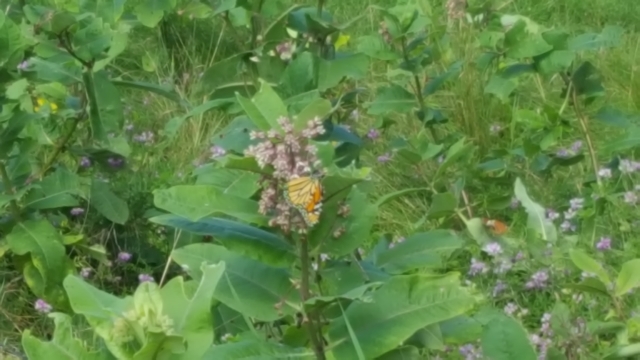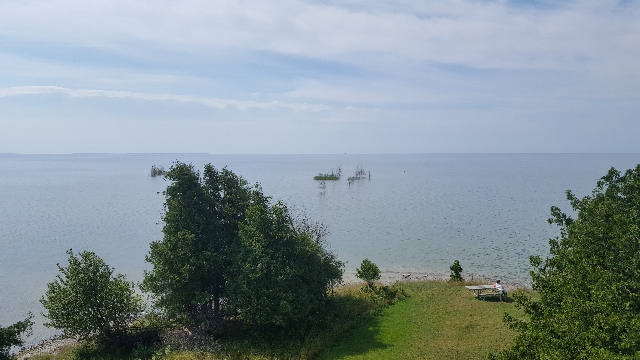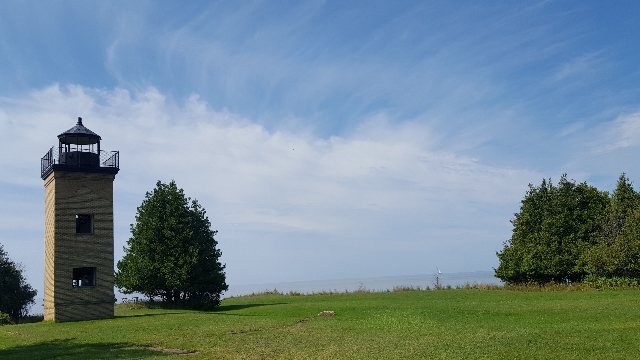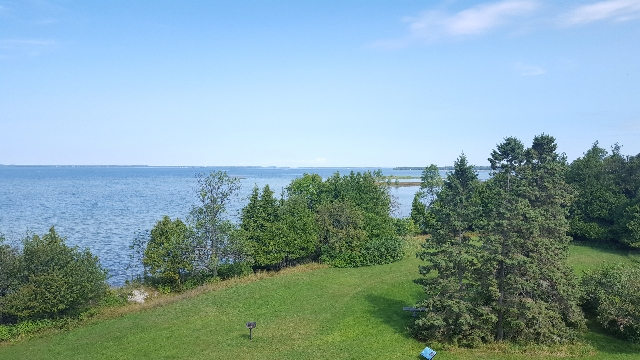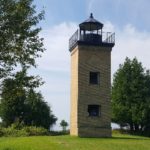 When asking about Peninsula Point Lighthouse we were told, “the lighthouse is at the end of the road”. At the time we did not realize it was at the end of a narrow, tree branches hanging, dirt road. Traveling is all about adventure so we ventured. Exiting the forestry drive, the lighthouse appeared along with a vast expanse of water; we were at the tip of Stonington Peninsula.
When asking about Peninsula Point Lighthouse we were told, “the lighthouse is at the end of the road”. At the time we did not realize it was at the end of a narrow, tree branches hanging, dirt road. Traveling is all about adventure so we ventured. Exiting the forestry drive, the lighthouse appeared along with a vast expanse of water; we were at the tip of Stonington Peninsula.
The lighthouse is the only structure on the point, but the point is not uninhabited. Monarch butterflies use this point during migration. We saw several monarchs feeding and enjoying the fall morning. Other wildlife is said to be in the area including spring warblers and blue herons along with geese and ducks. Of course gulls and shorebirds stop by.
The light station and keeper house was built in 1864. A light was needed on the point so ships could avoid the hidden shoals off the channels. It operated until 1936 when most shipping routes had moved south of the light. Control of the property and structure was given to the US Forest Service. The CCC (Civilian Conservation Corps) repaired the structure along with adding picnic and camping sites. These improvements were not enough to keep vandals away and maintenance funds were not available. There was talk of tearing down the structure, but soon a local chapter, Stonington Grange, of The National Grange of the Order of Patrons of Husbandry saved the lighthouse. But even this was not enough. In 1959 the 1 ½ story keeper’s house was destroyed by fire and later dismantled. Today only the forty foot light station is standing. Visitors may climb the stairs to the top where on a clear day you can see for miles.
We climbed the stairs with a father and his young daughter. She counted the stairs and said there were 38. We are not sure of the number but it was an easy climb. The light is no longer at the top but we could imagine the keeper tending the light and how important it was for ships.
NOTE: The Grange is a US fraternal organization. It was founded after the Civil War to promote economic and political well being of communities and agriculture. In 2005, there was 2100 chapters in 36 states.

